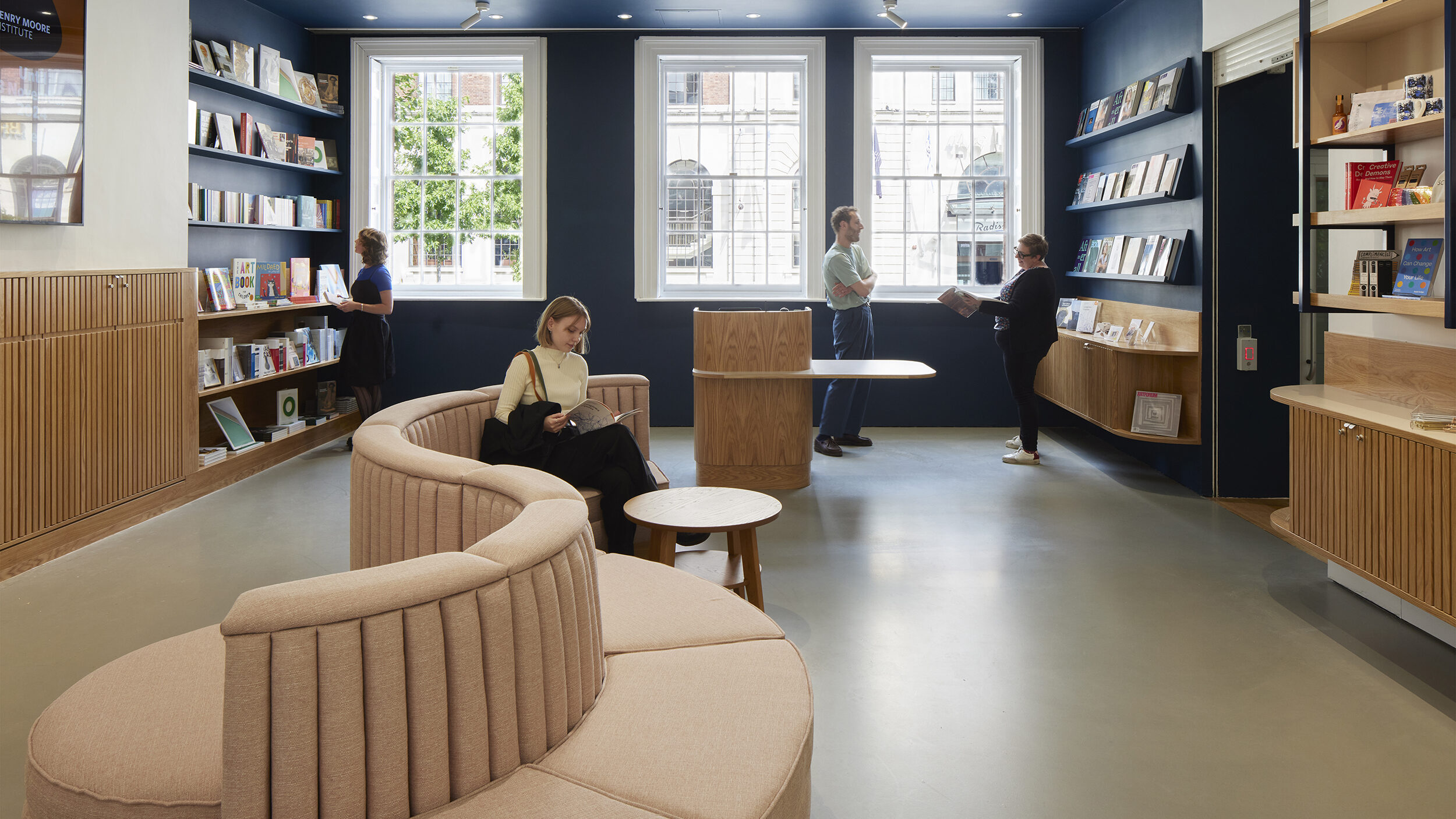Enjoy this article?
Most Museums Journal content is only available to members. Join the MA to get full access to the latest thinking and trends from across the sector, case studies and best practice advice.

The Henry Moore Institute, part of Henry Moore Foundation, opened on the Headrow in Leeds on 21 April 1993 as a centre for the study of sculpture open to all.
Jeremy Dixon and Edward Jones of BDP architects were commissioned to convert three wool merchant’s offices into the building we occupy today. Now Grade II-listed, the institute won the Leeds Design for Architecture and a Riba Architecture Award in the year of its opening.
Thirty-one years later, we have just reopened following our first major refurbishment, designed by Leeds-based architects Group Ginger.
While the institute rarely displays any work by its founder, its existence is inspired by Henry Moore’s wish for everyone to have access to sculpture in the city in which he studied.
Since opening, we have displayed the work of 750 artists from around the world, presented 230 free exhibitions, acquired over 30,000 books for our research library and hosted 150 visiting research fellowships.
We present a dynamic programme of historical, modern and contemporary exhibitions, conveying an expansive approach to the possibilities of sculpture and its histories. This is held alongside a complementary programme of research events in-person and online.
Underpinning much of our work is a long-standing collaboration with Leeds Art Gallery, part of Leeds Museums and Galleries.
This unique partnership merges the expertise in sculpture of both organisations to shape the growth, research and representation of one of the foremost collections of British sculpture internationally.
The collection includes finished sculptures, maquettes, models and works on paper, along with the Archive of Sculptors’ Papers housed at the institute.
Our pioneering work with artists and young people through our engagement programmes has achieved life-changing outcomes and national recognition, while standing for the spirit of our local context.
Building on Moore’s ambition to ensure access to art, our work with young people has grown significantly and was a catalyst for the refurbishment.
We reopened with, for the first time, a dedicated space to host school visits and groups that is suitable for making as well as meeting.
The drought of creative subjects in the curriculum will have long lasting implications. Regardless of how this is addressed by successive governments, facilities such as ours — along with our partnerships — are critical to fill the void and ensure that access to the arts, when it does happen, is as enriching and welcoming as possible.
The institute strives to bring provision at all moments in life, from primary school visits to post-doctoral fellowships or one of our annual Visiting Research Fellowships that give artists and scholars the opportunity to spend a month researching in our library and archive.
The refurbishment has significantly elevated the quality of our welcome and access across our programmes.
We will have a transformed reception and shop area, a refreshed lecture theatre that now allows the option of daylight, a new entrance and display space for our library, new toilets and various accessibility improvements throughout.
Driven by a commitment to sustainability, materials and furniture have been repurposed where possible and solar panels have been installed on our roof.
We aim to bring a 360-degree consideration of sculpture, its histories, the processes behind its creation and the artists who make it.
Our refurbishment represents a significant step-change, but our work is not done. Like many historical buildings, access is problematic and step-free entrance is possible only via a side lift: listed building status still overrules many access needs.
We have grander ambitions for all that we do and, working with Leeds City Council, have completed an options study that would see a complete transformation of the “culture strip” on the Headrow, which accommodates the institute, Leeds Art Gallery and Leeds Central Library.
The quest for funding begins.
Laurence Sillars is the head of the Henry Moore Institute, Leeds
There will be a tour of the Henry Moore Institute as part of the Museums Association Conference in Leeds (12-14 November)
Most Museums Journal content is only available to members. Join the MA to get full access to the latest thinking and trends from across the sector, case studies and best practice advice.